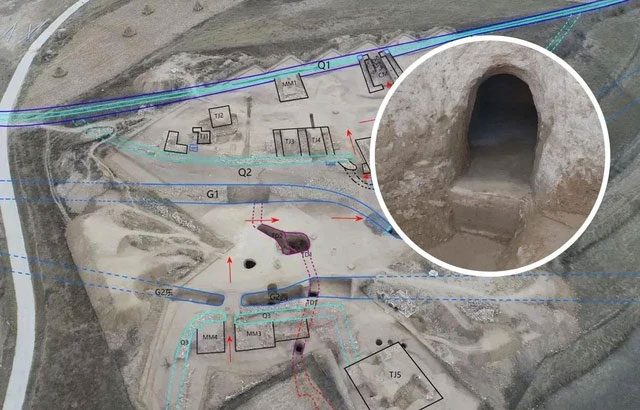The tunnel network is arranged in a radial pattern beneath the famous stone city of Houchengzui in the Inner Mongolia Autonomous Region of China.
According to Heritage Daily, previous excavations have dated Houchengzui to approximately 4,300 to 4,500 years ago, meaning that the tunnel network beneath it was also constructed at least 4,300 years ago.

Entrance to the tunnel network revealed in the excavation area of the Houchengzui stone city site – (Photo: CASS).
The Houchengzui stone city is a famous site located on the northern bank of the Hun River in Qing Shui County, Hohhot City, Inner Mongolia Autonomous Region – China.
This ancient stone city was built during the Longshan period, marking the emergence of Neolithic societies such as the Black Pottery or Longshan culture.
Houchengzui spans an area of approximately 138 hectares, including both the inner and outer city, reinforced by a three-layer defensive system consisting of moats and walls.
According to the Archaeology Institute of the Chinese Academy of Social Sciences (CASS), excavations have revealed that the newly discovered tunnel network is arranged radially from the center of the ancient city.
This tunnel network includes six main passages, ranging in depth from 1.5 to 6 meters, with arched ceilings similar to the cave houses of Longshan culture.
These tunnels served multiple purposes, including transportation, defense, and offense.
Furthermore, according to Sun Jinsong, Director of the Inner Mongolia Academy of Archaeology and Cultural Relics, the surrounding moats and the outer defensive rings of Houchengzui have been the focus of recent studies.
The excavations, where the tunnel network has been uncovered, also revealed three city gates of Houchengzui as well as other defensive structures, including sections of the city wall and fortifications.



















































